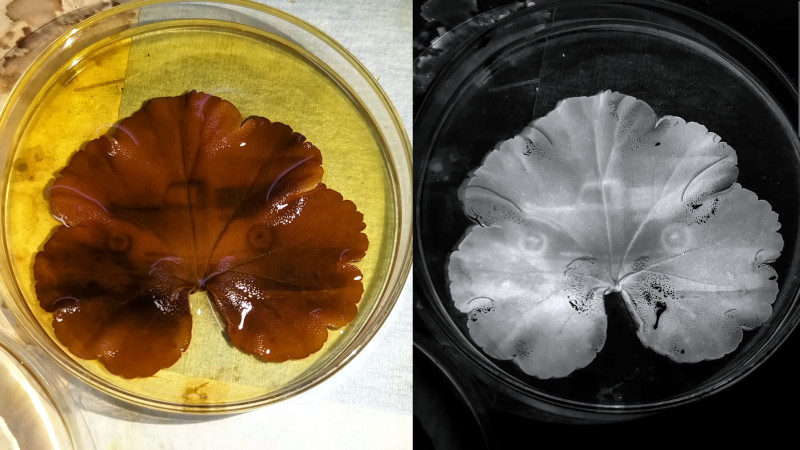[ad_1]
Something that haunts film photographers is the prospect of a film shortage. This won’t replace film in that event, but [Applied Science] demonstrates photography using leaves. That’s right, a plant can record an image on its leaves.
Anyone with a high-school level of education can tell you that the leaf is a solar energy harvester, with the green chlorophyll using CO2 scavenged from the air to make sugars in the presence of light. It stands to reason that this light sensitivity could be used to capture images, and indeed if you place a leaf in the dark for an extended period of time its chlorophyll fades away where there is no light. The technique described in the video below the break is different though, and much more sensitive than the days-long exposures required to strip chlorophyll. It relies on starch, which the leaf uses to store energy locally when it has an excess of light.
First the starch is depleted by keeping the leaf in the dark, but not long enough to strip the chlorophyll. An image is then exposed on the leaf, and developed by removing the chlorophyll with alcohol and staining the starch with iodine. Merely saying that an image is exposed doesn’t convey that this is hardly a sensitive process though. Exposures take hours in sunlight, with simple masks, with 35 mm negatives, and then with a huge home made lens, a shadowy picture of a pickup truck. We are guessing that if geranium leaves had an ISO number, it would be a tiny fraction of a point.
On one hand this is barely a functional photography medium, while on the other we’re sure that it will be of great interest to artists and other creative people. Where we’re fascinated though is in the choice of leaf. There must be species with more chlorophyll than a geranium, and we wonder how much help some selective plant breeding for starch production could be.
Meanwhile if your taste in photographic chemistry stays with silver halides, we’ve taken you to a film factory before.
[ad_2]
